Landscape photography in Alabama Hills, California
A visit to eastern California to photograph one of Hollywood's most popular backdrops
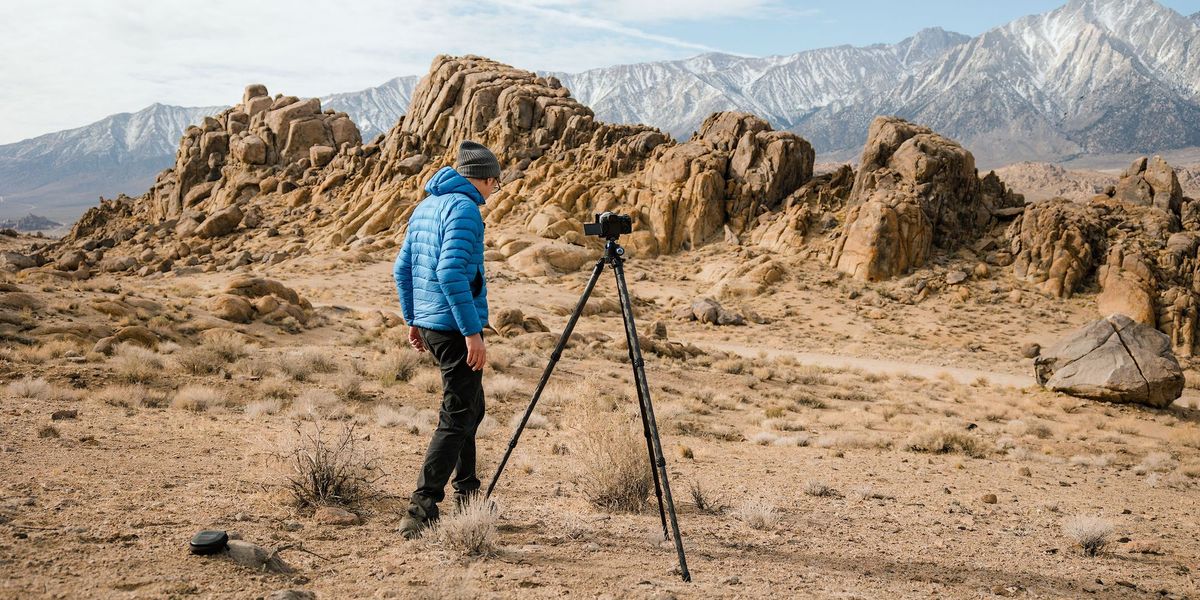
Alabama Hills is a rocky, desert landscape nestled between Mount Whitney and Death Valley National Park. The land is managed by the Bureau of Land Management, which means there are no passes, gates, or facilities. Alabama Hills is the kind of landscape I love — raw, (mostly) unspoiled land, perfect for exploration and finding unique photographic subjects.
The popularity of Alabama Hills has increased over the past decade thanks to social media, #vanlife, more Americans vacationing domestically during Covid, and its close proximity to other state and national parks.
But the popularity of Alabama Hills is not a recent phenomenon. Its rugged, desolate landscape has been used for decades in over four hundred films and television shows; most notably black and white Hollywood westerns. Gene Autry movies, Lone Ranger, Gunsmoke, John Wayne, etc. Modern audiences may also recognize Alabama Hills from the intro to Quentin Tarantino’s Django Unchained.
In honor of that history, the dirt road that cuts through Alabama Hills is named Movie Road. It's well traveled, flat, and easy to get through in any vehicle. No four wheel drive or high clearance required.
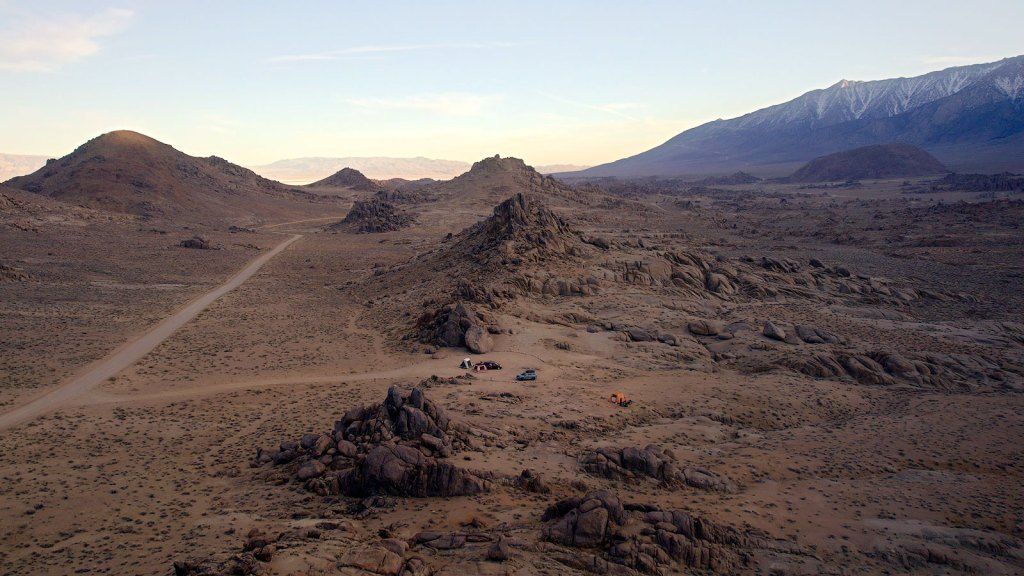
Accommodations for Alabama Hills
Part of the charm and experience of Alabama Hills is camping amongst mounds of towering boulders strewn across its landscape. When I was there in March 2022 however, the Bureau of Land Management had closed a number of camping areas; marking them “Day Use Only” (due to erosion and overuse). There were however still an adequate number of places to park an RV, camper van or pitch a tent overnight when I was there. If you can't find a spot within Alabama Hills, check out BLM's Tuttle Creek Campground nearby.
If you plan on pitching a tent, know that Alabama Hills can get windy. Very windy. I recommend finding a camping spot in close proximity to a hillside or rock to help block the wind so you’re not listening to your tent rattle all night.
If camping isn’t your speed, the small town of Lone Pine is only a couple of miles away. There you will find a few budget hotels and motels (some of which are classic mid-century with fantastic neon signage), a handful of restaurants and diners, plus a couple of gas stations.
For my trip, I rented this tiny home through Airbnb (signup for Airbnb). The home was in a quiet trailer park just outside of Lone Pine, right on the edge of nature, with a stunning view of the sierras just outside its back door. For me it was the perfect home base for exploring Alabama Hills and the surrounding area.
Photographing Alabama Hills
Photographically speaking, Alabama Hills is incredible. If you’re into deserts and unusual geology as I am, you’ll be thrilled. The area is compact and relatively small, but if you take time to hike and explore all the different rock formations and wild areas, you’ll never run out of things to photograph. I spent four days doing just that, and never got bored.
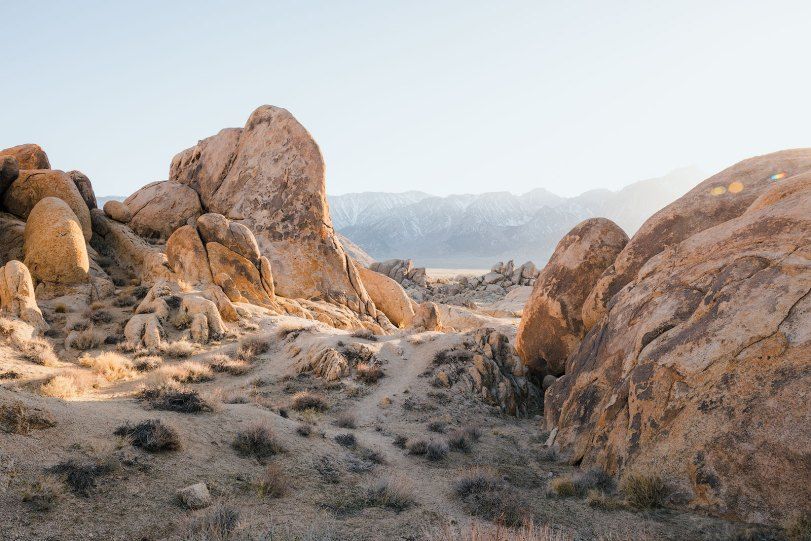
Alabama Hills is known for its natural arches. Mobius Arch is the most popular and dramatic. If you go, you should see plenty of parked cars at the Mobius Arch trailhead. The arch is well photographed, with many photographers choosing to shoot wide angle with the sierras composed inside the opening of the arch. I enjoyed seeing Mobius Arch in person, but chose not to spend time photographing it.
(Note: If you visit Mobius Arch, don’t climb on top of it. Seriously, don’t be that person. It could break the arch.)
The other popular photography hotspot is Movie Road at sunrise, looking westward back towards Mount Whitney (image below). The dirt road bends upward toward a hill and provides a solid leading line for the mountains. You can expect to see other photographers here, as I did. We took turns positioning our tripods in the center of the road.
Creatively, I wasn’t that excited by this location; perhaps because I’d seen the image so many times before. But I captured it nonetheless (see below). The mountains however are gorgeous at sunrise, lighting up in beautiful hues of magenta, orange and red with cool blues in the surrounding shadows. These are definitely worth photographing or simply waking up to see, for the light and color only lasts a few minutes.
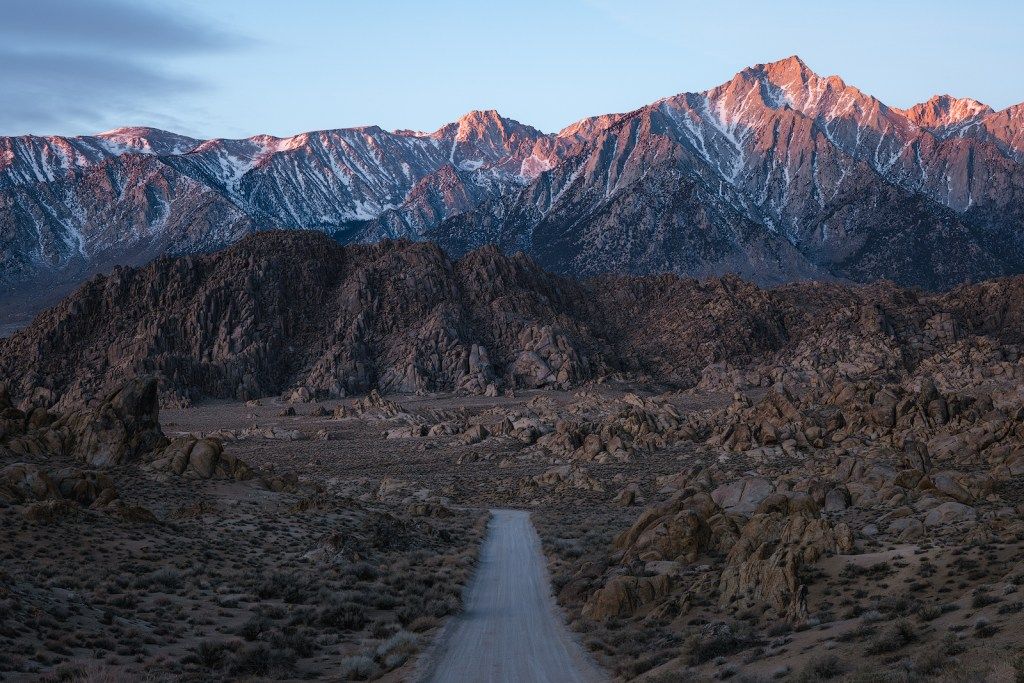
Where I most enjoyed photographing Alabama Hills was in the rocky landscape to the west of Movie Road. Look out over the valley, and you’ll see many fantastic boulders and canyons. This area is a blast to hike through and explore. I kept stumbling across fantastic subjects and compositions, and racked up plenty of steps and shots while there.
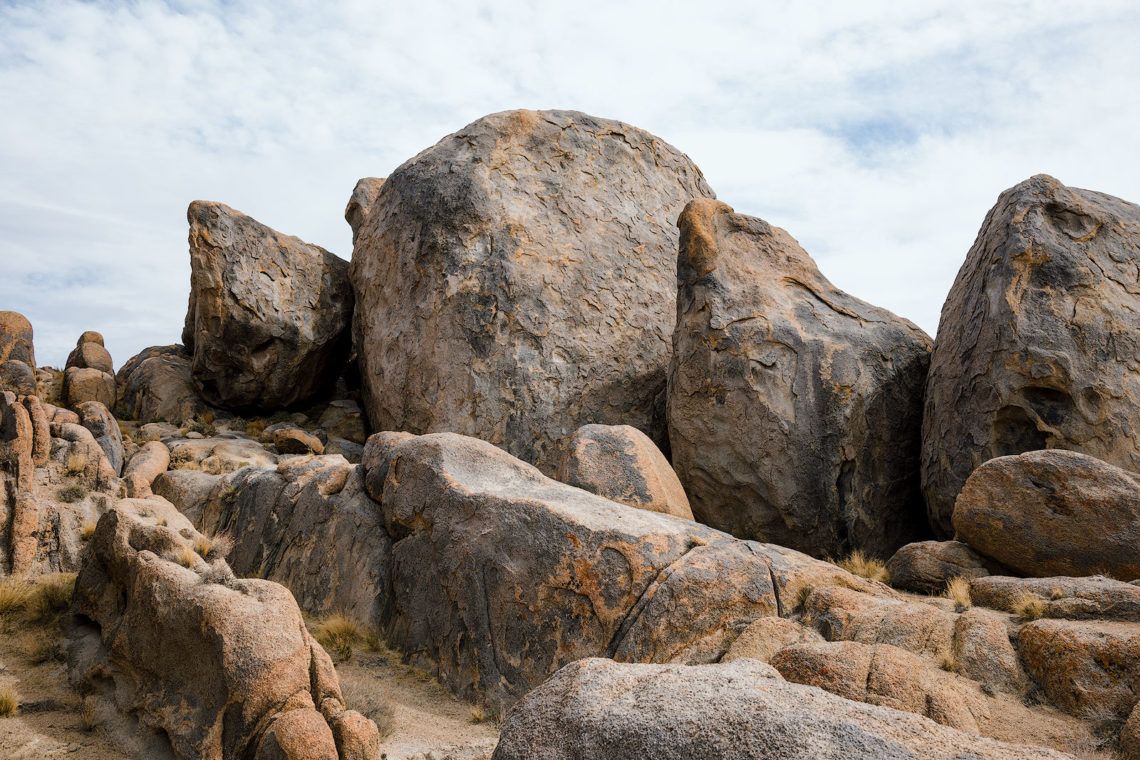
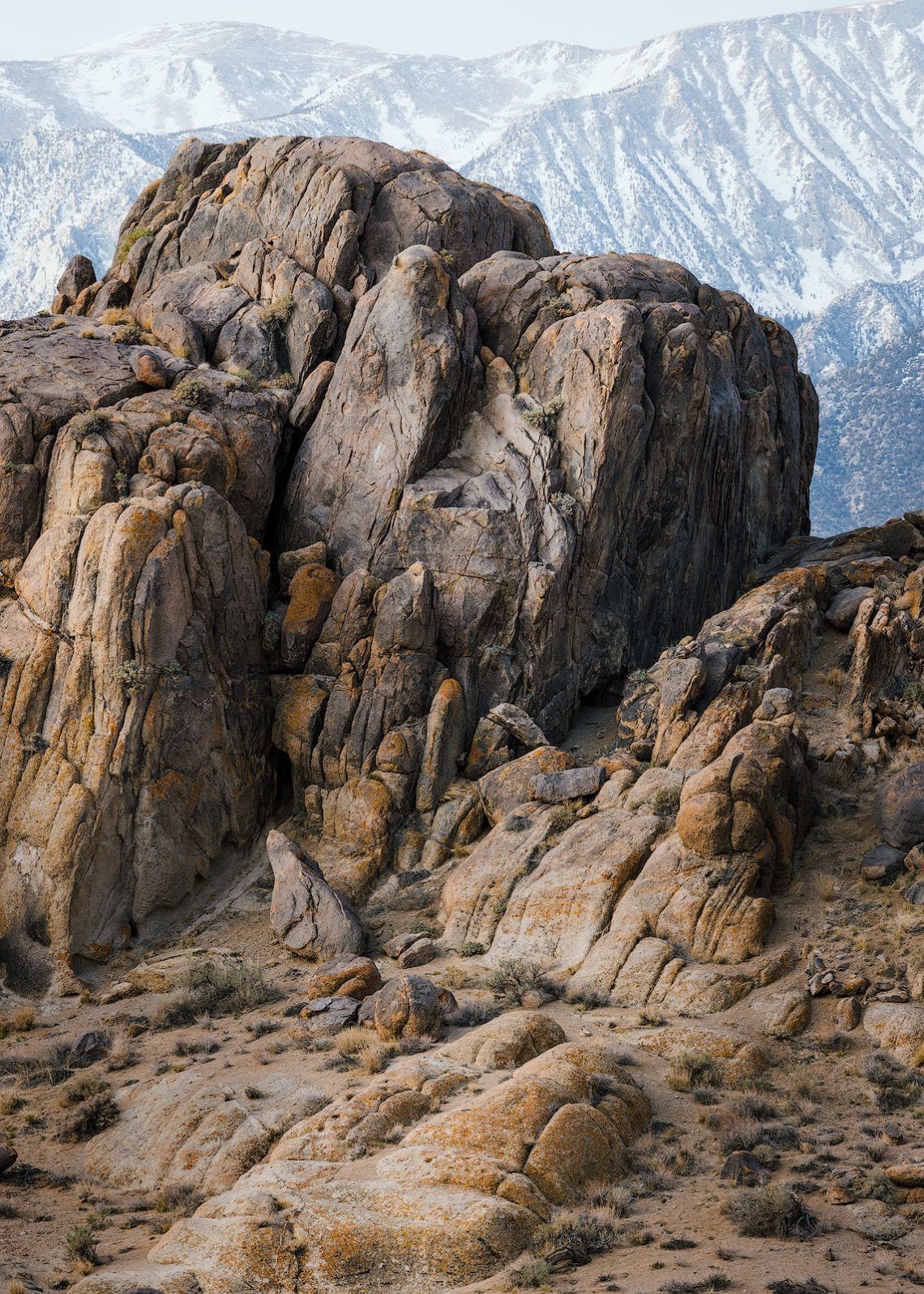
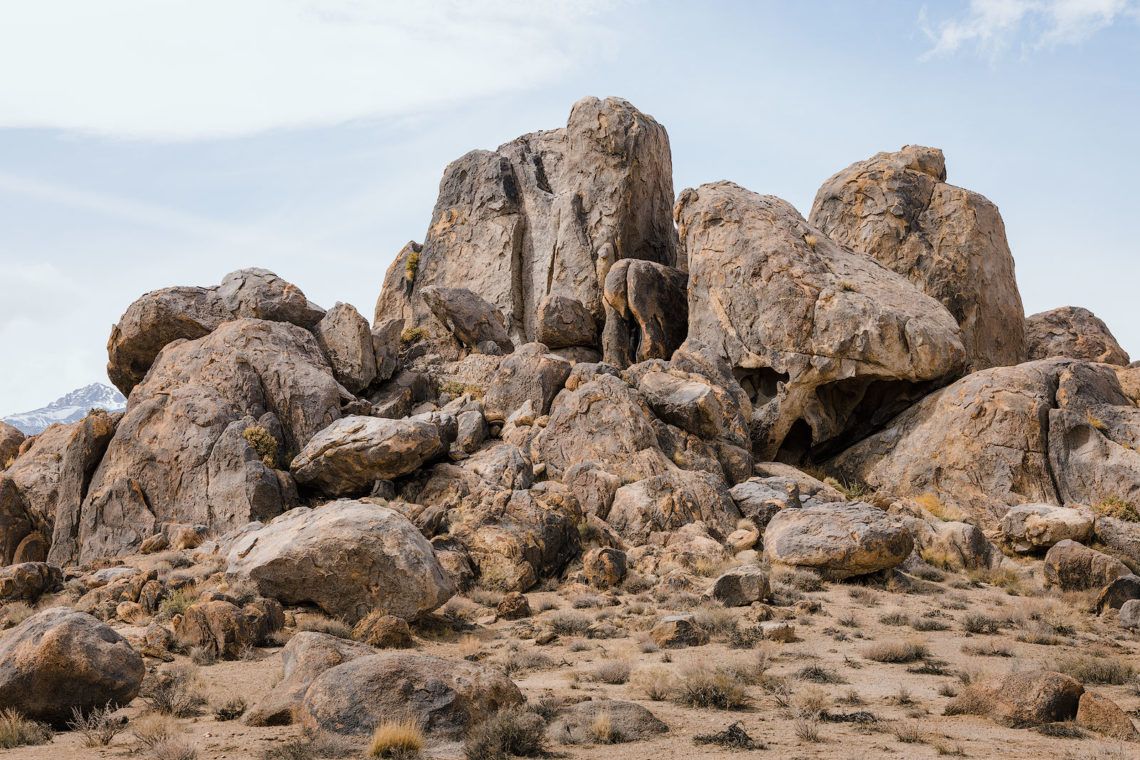
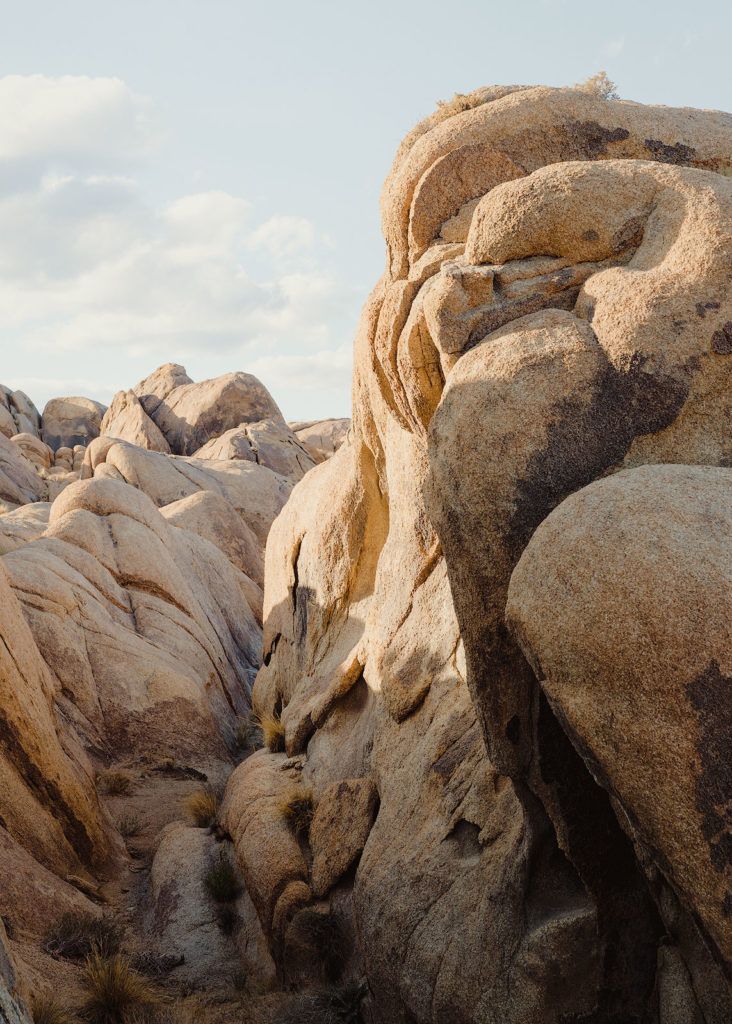
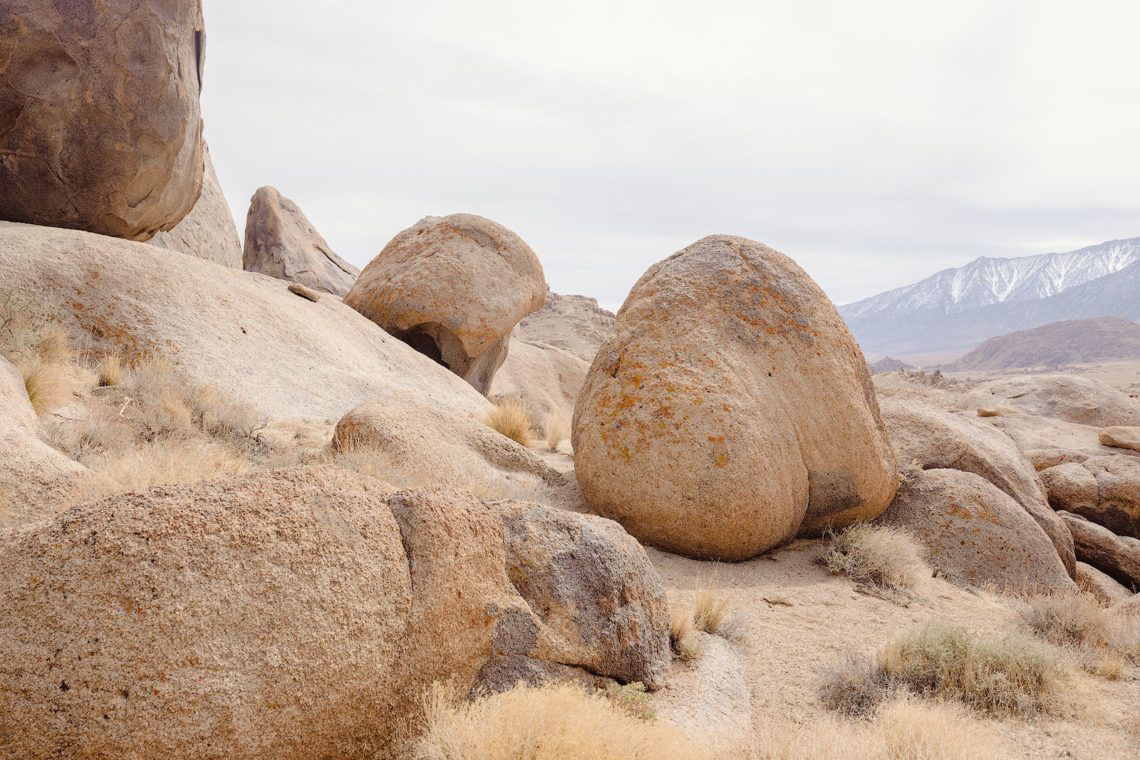
Regardless of where you choose to shoot, the main thing to know about Alabama Hills is that the valley is flanked to the east and west by tall mountains. That makes golden hour and blue hour difficult for the sun doesn’t illuminate the valley interior until well after the best light has passed. If however you hike through the rocks into the canyons and shadowy in-between areas during the bright, mid-day sun, you can find great subjects.
For these areas I'd recommend a variable zoom (eg, 24-70mm) for shooting wide angle, standard, and telephoto. I would also consider bringing a longer telephoto lens as well (eg, 70-200mm) to pull the mountains towards you and compress the image.
At sunset, the best light is a couple of hours before golden hour. I say before because the sun sets in the west behind the tall sierras, which blocks any and all light from the valley below. In those two hours however, the sun is sitting a lower angle, and the light is warmer and more golden than midday.
I recommend hiking to wherever you intend to shoot well before the scheduled time for sunset, for Alabama Hills will get darker earlier than you may expect. If you shoot into the shadows and find subjects illuminated with a hard edge light, you can get some beautiful images before the sun disappears.
Because Alabama Hills is BLM land, drones are permitted for aerial photos and videos. As mentioned earlier however, Alabama Hills can get very windy, so keep an eye on wind speed if you intend to fly (I typically avoid flying mine at 20mph or stronger). I would also recommend bringing a set of drone ND filters and perhaps even a glow mist filter to bloom that golden, California sunlight for added visual effect.
Other recommendations
If buying groceries or other necessary items, I recommend purchasing them in a larger town or city someplace outside Lone Pine. There is a small in-town market with all the essentials, and gas stations carry some items as well, but everything in Lone Pine is more expensive due to its remoteness. Good idea to fill up on gas elsewhere too.
If interested in the western films and television shows filmed in the area, the Museum of Western Film History may be worth checking out. Would also recommend stopping in the visitor center at the intersection of State Route 136 and Hwy 395 for maps, brochures, and touristy stuff (I bought a sweet Alabama Hills t-shirt there).
Video
I share the experience of photographing Alabama Hills in this video from my YouTube channel.



